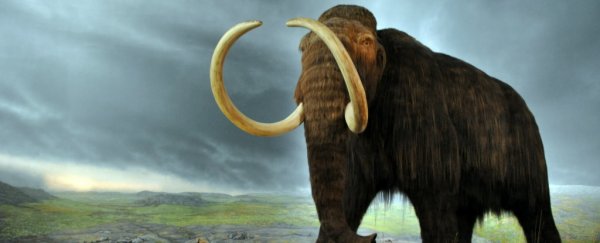Scientists have found evidence that one of the last living woolly mammoth populations was driven to extinction because it ran out of fresh water.
The research could put an end to the longstanding debate over how the mammoths died out, and it also offers a unique look at how climate change can impact a species' survival - something we really need to be on top of today.
"Modern climate change could shift conditions more rapidly, which could make the story of prehistoric St. Paul Island relevant today," said one of the team, Matthew Wooller from the University of Alaska Fairbanks.
These St. Paul Island mammoths are pretty special. Unlike the mammoths that lived in other parts of the world, the ones living on St. Paul Island in Alaska lived until around 5,000 years later, dying off just 5,600 years ago.
Though it's still heavily debated, many researchers suggest that most woolly mammoth populations on the mainland were driven to extinction by human hunters and a shifting climate. But those on St. Paul Island escaped this fate by living in such a remote location.
Despite living in a relative safe haven, the St. Paul Island mammoths still went extinct, and now, thanks to the new study, we might know why: a lack of fresh water and rising sea levels.
To come to this conclusion, Wooller and his colleagues analysed sediment samples from the freshwater lakes on the island to see how stable oxygen isotopes differed inside the remains of insects.
These samples were dated to before, during, and after the mammoths went extinct, so the team could see how they progressed over time.
"The remains of aquatic organisms living in lakes retain water isotope signatures within their bodies, which allowed researchers studying their exoskeletons to determine that lake levels had diminished," the team explains.
"The remains of diatoms and aquatic invertebrates from the core also changed over time, indicating decreasing lake levels and water quality leading up to the mammoth extinction."
They then coupled this data with nitrogen isotope samples from mammoth bones found on the island, finding a link between the island's lowering water levels and when the mammoths started to die off in the fossil record. These connected pieces of evidence led the team to suggest that a lack of fresh water likely led to the species' demise.
"It paints a dire picture of the situation for these mammoths," Wooller said. "Freshwater resources look like the smoking gun for what pushed them into this untenable situation."
The team says that St. Paul Island likely shrank over the course of 2,000 years, and the mammoth population slowly dwindled until there were no more left.
One of the most interesting takeaways from the new study is how the findings might apply to our current state of climate change - especially for those living in the most unstable regions because it shows how easily a shifting climate can wipe out populations.
This is crucial, because we've already seen the first mammal species go extinct because of human-caused climate change this year, and back in May, researchers in Germany predicted that global warming will likely trigger a "mass climate exodus" in North Africa, where temperatures will be too high for human survival.
Hopefully our woolly friends can give us some much-needed advice from the grave.
The team's findings were published in Proceedings of the National Academy of Sciences.
